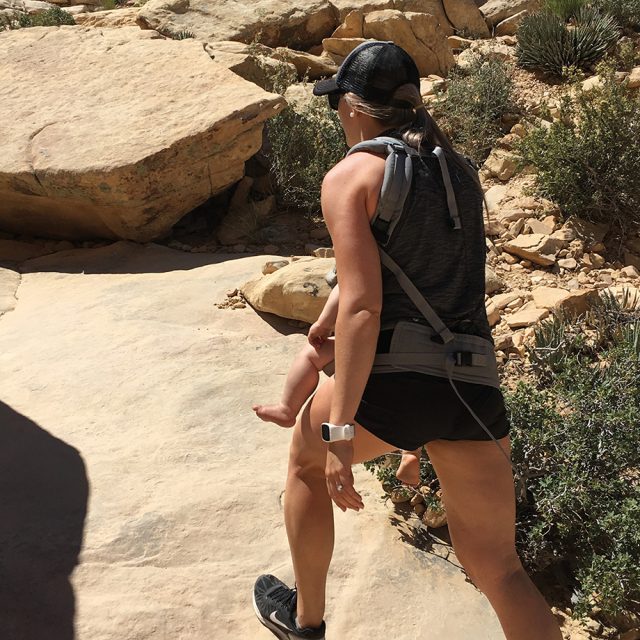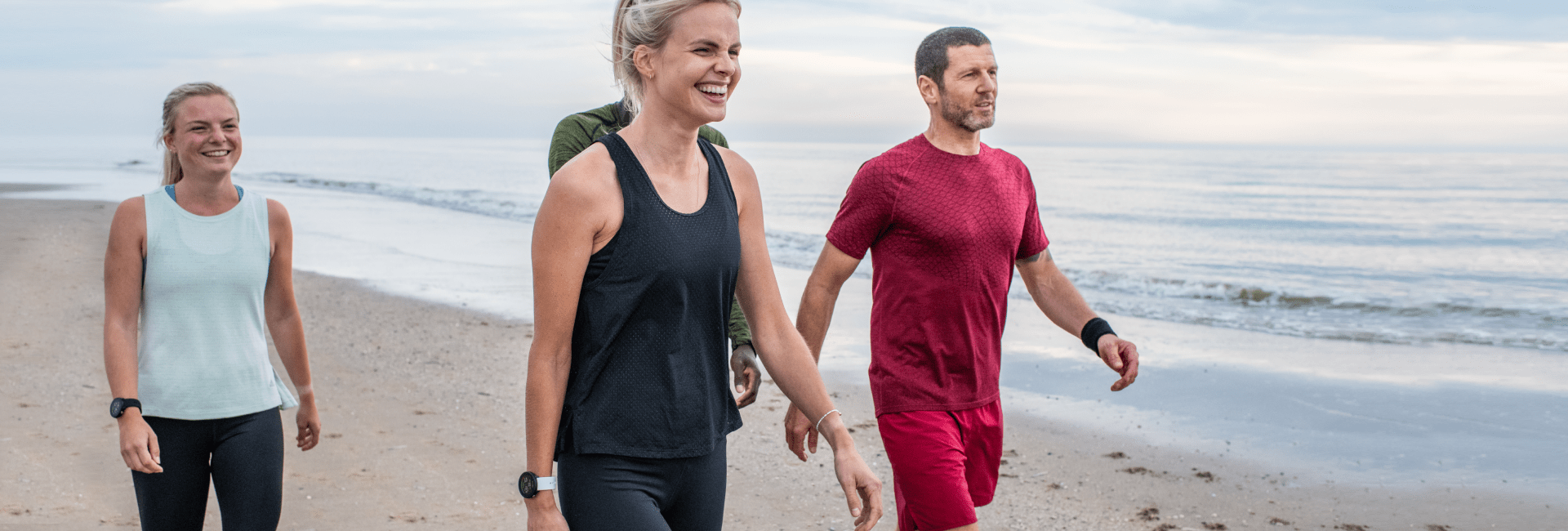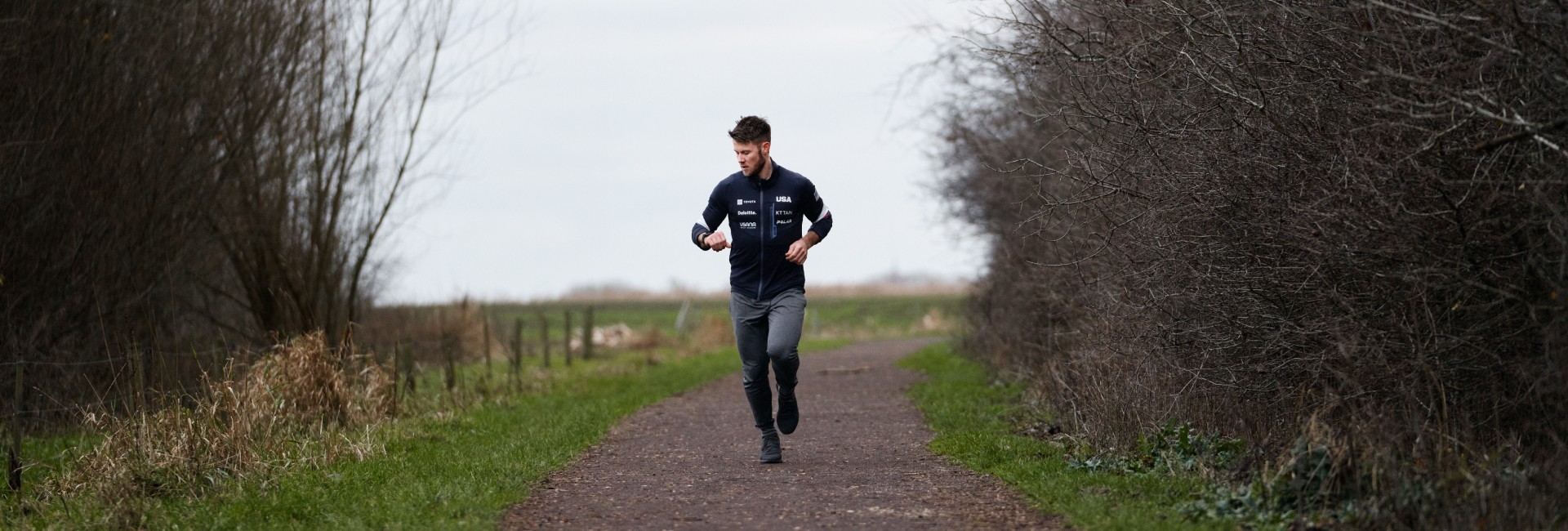A long walk in the park might not be exactly what you picture when you think about a sweaty, strenuous workout. Don’t scoff at walking, though! Walking workouts are jam-packed with benefits. Long, brisk walks can help you maintain a healthy body weight, lose body weight, and improve your muscle strength without the impact and strain cause by running or other sports.
In this article, we’re going to cover how you can turn your walk into a workout and learn to walk for wellness.
This article on walking workouts answers the questions:
- How to choose a route for walking workouts?
- How to add resistance to walking workouts?
- How to vary intensity during walking workouts?
But first, Polar Running Coach Maria explains the secrets of walking workouts in this video.
Walk for Wellness
While it’s true that walking isn’t as physically strenuous as running, it doesn’t necessarily mean it’s not as “good” of a workout. Harder doesn’t always equate better. Compared with running, the points walking loses in level of intensity, it quickly gains in being the more joint-friendly option. Walkers are far less prone to injuries, whereas most avid joggers will have an overuse injury story or two to share.
Walking briskly improves your cardiovascular fitness, strengthens your bones and muscles, and improves your balance and coordination, which are increasingly important, the older you get. Walking comes with mental benefits as well. Research shows that walking improves your mood and works to reduce stress and tension. Walking assists your immune system, helping you fight disease and illness. Studies also show that avid walkers sleep better, too.
Walking briskly improves your cardiovascular fitness, strengthens your bones and muscles, and improves your balance and coordination.
Like running, walking doesn’t require a lot of gear. Just have good shoes and suitable clothing, especially when exercising outdoors.
Walking is also one of the easiest forms of workout to get started with. It’s an activity most of us already do, daily. When you do it as a form of physical exercise, you just do it for longer and maybe with higher intensity. Every step counts!
How long should a walking workout be?
Steps per day is a widely accepted metric for physical activity. Typically, we’ve seen10,000 daily steps like the correct goal to maintain an active lifestyle. Recent studies, however, show that just 7,000 daily steps can bring significant health benefits, regardless of step intensity.
As important as logging steps throughout the day, walk continuously for a long period of time is essential to turn walking into a significant workout. If you have time for a sustained walk, aim to walk briskly for 45-60 minutes The average walking speed is 4.5km, so this distance will add a good amount of steps to your daily count.
get the most of walking workouts
The benefits, both physical and mental, of walking have long been documented. Studies, like this one on US adults published in 2020, say people who walk regularly are healthier and live longer than those who don’t.
You don’t need to walk very fast or far to enjoy the benefits of walking. Following a few recommendations can help walkers get the most out of their walking workouts:
- To get results, it doesn’t always need to be about having a high intensity workout. Low intensity, slow walks can help people to maintain their cardiovascular health.
- High intensity walking exercises, such as Nordic Walking (using walking poles) can be a good way to amplify the positive results of walking around the body, by utilizing more muscles.
- Changing the terrain of your walks can also help in providing variety to the intensity of the workout. For example, going uphill or downhill can have a large impact on the intensity of a walking workout and can lead to even greater results.
- Consider walking with a group of people to make it more of a social experience. While this may not improve your physiological health, it can have a positive impact on your mental health and stress levels.
- Tracking heart rate during your next walk can help you optimize your exercise and learn more about your heart rate zones in different contexts, ensuring you get the most out of your walks.
4 Tips For Walking Workouts
Now that you know the benefits of walking workouts, why don’t you skip a tough HIIT workout at the gym, and head outdoors for a change to enjoy some fresh air? With these tips, you can turn your walk into a workout.
1. Try walking workouts with a view
Sometimes getting into your walking shoes and out of of the door can be the hardest part of your workout. Once you’re out in the fresh air, have you noticed how the distance and time seem to pass much faster when you’re walking along your favourite coastal or bush track?
Taking a walking route with a view can be a great form of stress relief and a source of inspiration with fellow walkers encouraging you to go a little further or walk slightly faster. Surrounded by others being physically active the energy can often be contagious and you may find that the 20-minute walk turns into a 30-40 minute walk.
2. Choose a route with an incline or mixed terrain

Rather than going for your casual walk around the block, try to mix it up and opt for a path that has inclines and declines.
An even better option is to choose a route with stairs or a nearby hill. While it may not be a walking route, you can tackle the stairs/hill a number of times depending on your energy levels, motivation and time available.
Recruiting more muscle fibres means that your body is working harder and burning more calories, and it will also help tone and strengthen your lower body.
Adding a decent incline to your walk will help to activate the larger muscle groups of your glutes, hamstrings and quadriceps, compared to the work involved when walking on flat terrain.
Inclines are also fantastic for cardiovascular fitness. Higher intensity levels increase your heart rate and pushes your body to use your anaerobic energy system – almost serving as a form of HIIT with alternating between the climbs (work effort) and descents (active recovery).
You can mix it up and take the stairs one or two at a time – striding it out up a hill mimics a lunge exercise and can deliver the same results.
3. Add resistance to your walking workouts
If your usual walking route has benches scattered along it, for example at a park or along a foot path, incorporate the following for every lap that you complete or every 5th bench/5 minutes (1 or 2 rounds per bench stop):
- Tricep dips x 12
- Incline push-ups x 12
- Step ups x 12 each leg
- Bench crunches x 12
Investing in a pair of ankle, wrist or small hand weights is also a great way to add a little extra resistance to your walk to help your upper body work a little bit harder.
Try to walk for five minutes pumping your arms, then take 2-3 minutes recovery before repeating.
Holding something in your hands reminds you to pump your arms which in turn can improve the efficiency of your gait and encourage you to increase your pace (this is why sprinters have such a great arm drive when they are racing).
If you don’t want to be walking the streets with your light dumbbells, you could always take a drink bottle with you and swap arms while you’re walking. This will encourage you to use your arms, focus on your posture and activate your core.
4. Vary the intensity of your walking workouts
Just as you would when performing HIIT on the treadmill, try to vary the speed of your walking workouts. That way you’ll use both your aerobic and anaerobic energy systems.
The work efforts are short, so this is a great option if you’re feeling short on energy.
While power walking may not increase your heart rate to the same level that a sprint would, adding 30 seconds of a faster pace walk (work effort), followed by two minutes of your normal pace (recovery) for a lower intensity interval-style workout can be highly beneficial.
If you don’t want to keep glancing at your fitness watch to time this, aiming for landmarks is another great form of adding some power walking.
- Select a landmark and increase your walking speed until you reach it, then recover at a steadier pace until you reach the next identified landmark to pick it up again.
Music is a great way to stay motivated and keep up your pace – or speed it up or slow it down. Songs of about 128 BPM equate to a brisk walk for most people.
Now, TUrn Your walk into a workout!
Walking workouts are a fantastic form of low-intensity aerobic exercise that is easy on the joints. Walking is also a great active recovery workout or a good option for those days when you can’t quite muster the energy to go for a run.
Next time, when you head out for a walk, incorporate some of the above tips to turn your walk into an enjoyable workout.
If you liked this post, don’t forget to share so that others can find it, too.
Or give it a thumbs up!
I like this article
Please note that the information provided in the Polar Blog articles cannot replace individual advice from health professionals. Please consult your physician before starting a new fitness program.





